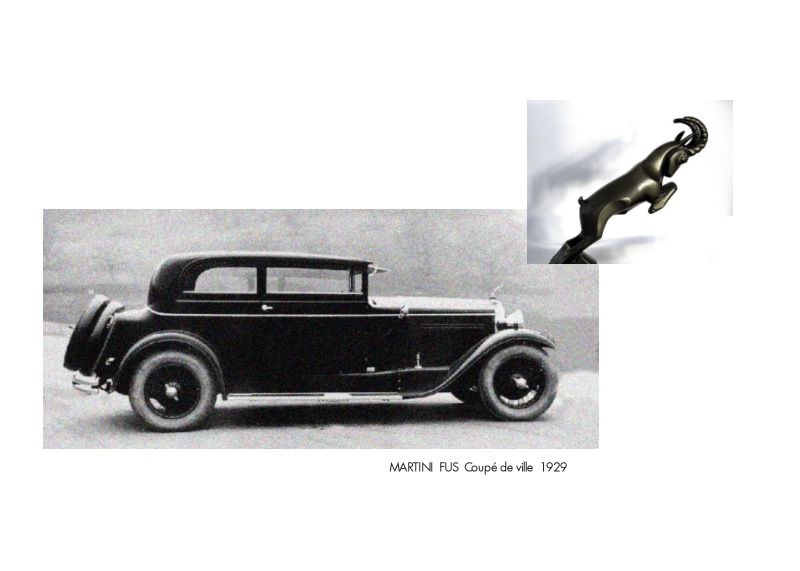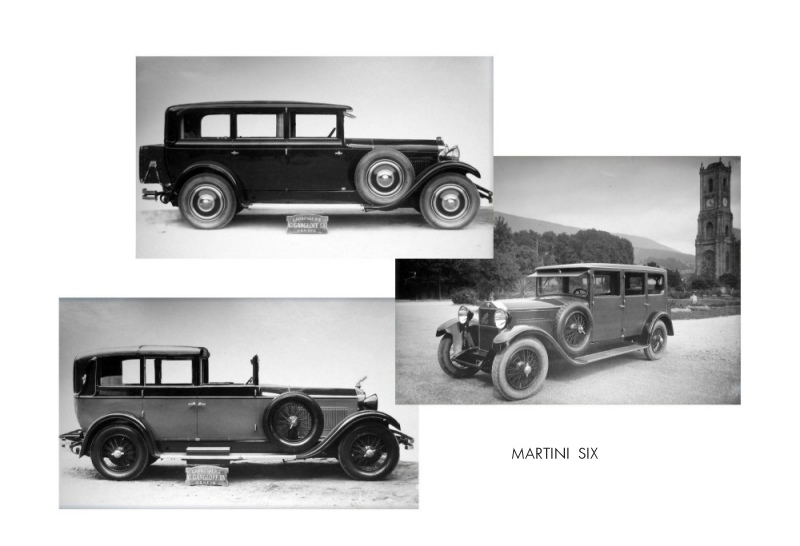Martini (automobile Company) on:
[Wikipedia]
[Google]
[Amazon]





 Martini was a pioneer
Martini was a pioneer




 Martini was a pioneer
Martini was a pioneer Swiss
Swiss may refer to:
* the adjectival form of Switzerland
* Swiss people
Places
* Swiss, Missouri
* Swiss, North Carolina
*Swiss, West Virginia
* Swiss, Wisconsin
Other uses
*Swiss-system tournament, in various games and sports
*Swiss Internation ...
automobile
A car or automobile is a motor vehicle with Wheel, wheels. Most definitions of ''cars'' say that they run primarily on roads, Car seat, seat one to eight people, have four wheels, and mainly transport private transport#Personal transport, pe ...
manufacturer, in operation 1897 to 1934.
History
The beginning
In 1897, Swiss businessman Adolf von Martini, son of Friedrich von Martini, the inventor of the action used in theMartini–Henry
The Martini–Henry is a breech-loading single-shot rifle with a lever action that was used by the British Army. It first entered service in 1871, eventually replacing the Snider–Enfield, a muzzle-loader converted to the cartridge system. ...
rifle, built an experimental rear-engined car. He followed this with V4 cars of 10 hp (7.5 kW) and 16 hp (12 kW) in 1902. Since Swiss cantons
A canton is a type of administrative division of a country. In general, cantons are relatively small in terms of area and population when compared with other administrative divisions such as counties, departments, or provinces. Internationally, t ...
were unusually hostile to cars, the company had to rely more than most on exports, and demand from abroad proved sufficient to justify building a factory in Saint-Blaise in 1904; von Martini relied on a licence from Rochet-Schneider
Rochet-Schneider was a French company, based in Lyons, that produced automobiles between 1894 and 1932. The Rochet-Schneider sales slogan was "strength, simplicity and silence".
Like other motorcars of the Brass Era, the cars made by Rochet ...
of France, using an armored wood chassis
A chassis (, ; plural ''chassis'' from French châssis ) is the load-bearing framework of an artificial object, which structurally supports the object in its construction and function. An example of a chassis is a vehicle frame, the underpart ...
and mechanically operated valve
A valve is a device or natural object that regulates, directs or controls the flow of a fluid (gases, liquids, fluidized solids, or slurries) by opening, closing, or partially obstructing various passageways. Valves are technically fittings ...
s.
Promptly, his British sales agent, Captain H. H. P. Deasy, set off in a 16 hp on a 2,000-mile (3,200 km) trek through the Alps, which followed his earlier stunt of driving a cog-wheeled Martini up a mountain railway; his praise in both cases was effusive. By 1906, Deasy was the sole salesman. That summer, with a 20 hp and a four-cylinder 40 hp available, Deasy made an ill-advised challenge to Rolls-Royce (which had a six-cylinder engine); Deasy, and (more importantly) Martini lost the 4,000-mile (6,400 km) "Battle of the Cylinders".
For 1907, there was also a chain drive
Chain drive is a way of transmitting mechanical power from one place to another. It is often used to convey power to the wheels of a vehicle, particularly bicycles and motorcycles. It is also used in a wide variety of machines besides vehicles. ...
n 28 hp, and an entry in the ''Kaiserpreis'' rally, where the marque placed thirteenth and fifteenth. In 1908, showing the rapid pace of change, shaft drive
A drive shaft, driveshaft, driving shaft, tailshaft (Australian English), propeller shaft (prop shaft), or Cardan shaft (after Girolamo Cardano) is a component for transmitting mechanical power and torque and rotation, usually used to connect ...
was standard, in 12 hp, 16 hp and 20 hp models (all still four-cylinder engines, however). That year's ''Coupe de Voiturettes'' saw 1086-cc (66 ci) inlet-over-exhaust SOHC
An overhead camshaft (OHC) engine is a piston engine where the camshaft is located in the cylinder head above the combustion chamber. This contrasts with earlier overhead valve engines (OHV), where the camshaft is located below the combustion cha ...
-engined Martinis seventh, eighth, and tenth, enough for the team victory.
The racer was marketed as a 1909 road car, the 10/12, and new monobloc construction was standard across the line. Yet the engineers could not make up their minds; in 1910, they reverted to side valve
A flathead engine, also known as a sidevalve engine''American Rodder'', 6/94, pp.45 & 93. or valve-in-block engine is an internal combustion engine with its poppet valves contained within the engine block, instead of in the cylinder head, as ...
s, and in 1913 switched to sleeve valves for the 25/35. The marque's last racing attempt in 1913 used an overhead camshaft engine with four 85 x 132 mm cylinders, hemispherical combustion chambers and four valves per cylinder. It was known as the '15 Sport' and a regular competitor at hillclimbing events.
The years leading up to the World War were Martini's best, with annual production hovering around 600 cars, placing the company at the head of the Swiss automobile industry. While foreign manufacturers were already making inroads, the war years kept Martini in the black as they delivered large numbers of vehicles to the Swiss Army
The Swiss Armed Forces (german: Schweizer Armee, french: Armée suisse, it, Esercito svizzero, rm, Armada svizra; ) operates on land and in the air, serving as the primary armed forces of Switzerland. Under the country's militia system, re ...
.
Inter-war era
The post-warrecession
In economics, a recession is a business cycle contraction when there is a general decline in economic activity. Recessions generally occur when there is a widespread drop in spending (an adverse demand shock). This may be triggered by various ...
, however, crippled Swiss exports including those of Martini. Martini was one of a very few manufacturers to restart production, with a mildly warmed over pre-war design as the TF 15/45 PS. A conventional four-cylinder of 3.6 litres displacement, it was wholly outdated in spite of a high standard of finish, with sales beginning at a low pace and then steadily sinking. Swiss manufacturers, with only a tiny domestic market, had been heavily export-dependent but external markets vanished in the harsh economic climate of the early 1920s. In June 1924 the nearly bankrupt Martini company was taken over by the Steiger brothers of Burgrieden, Germany. The Steigers relocated to Switzerland, having seen the writing on the wall for their German company which closed down in 1926, forcing the Steigers to sell their home to satisfy the creditors. The old TF soldiered on until 1925, but at the 1926 Geneva Motor Show
The Geneva International Motor Show is an annual auto show held in March in the Swiss city of Geneva. The show is hosted at the Palexpo, a convention centre located next to the Geneva Cointrin International Airport. The Salon is organised by th ...
Walther Steiger was able to show the new Martini-Steiger FU six-cylinder car. von Fersen, p. 90 This had a side-valve engine of 3.1 litres and was a fully modern automobile albeit without any technical advances. It entered production in 1927, along with the larger (4.4 litres) FUS model. While sold as the "Martini Six" at home, the "Steiger" (meaning "Climber", suitably enough for a Swiss car) part of the name was emphasized in export markets where it was the "Steiger-Martini." Steiger's Alpine Chamois
The chamois (''Rupicapra rupicapra'') or Alpine chamois is a species of goat-antelope native to mountains in Europe, from west to east, including the Alps, the Dinarides, the Tatra and the Carpathian Mountains, the Balkan Mountains, the Rila ...
buck was incorporated into the logo and was also used as a hood ornament.
The Martini Six, while of a mainstream design, maintained Martini's high quality and workmanship standards and was an accordingly expensive car. Only a few hundred were built from 1927 until 1930, with the lion's share being sold at home in Switzerland. von Fersen, p. 92 The FU and the FUG engine shared a , with a or an bore for the smaller and larger engine, respectively. Power outputs were at 3000 and 3200 rpm. The larger version proved considerably more popular and a series of revisions beginning in 1929 was mainly applied to the 4.4-litre version. The updated versions were sold as the Martini FUS and FN (and the smaller-engined FUN) with various improvements. Already in 1929 the updated FUS gained a four-speed gearbox, all-wheel brakes, and twin Zenith carburettors. In 1931 the FUN and FN versions were discontinued, but next year's NF model was a modernized version of the earlier FN.
During the Great Depression
The Great Depression (19291939) was an economic shock that impacted most countries across the world. It was a period of economic depression that became evident after a major fall in stock prices in the United States. The economic contagio ...
it quickly became clear to Martini that their existing six-cylinder cars were too expensive for the times. Accordingly, Martini signed a contract with Wanderer
Wanderer, Wanderers, or The Wanderer may refer to:
* Nomadism, Nomadic and/or itinerant people, working short-term before moving to other locations, who wander from place to place with no permanent home, or are vagrancy (people), vagrant
* The Wan ...
in 1930 to license build their recently updated six-cylinder car, a lighter, smaller, and cheaper proposition. This was badged Martini KM but it did not sell as well as hoped, likely the result of being a rather heavy car with low peak power and a weak chassis. The KM differed from the W11 only in minor details such as a marginally longer wheelbase and larger tread, altered gearing, and by using Scintilla Scintilla (the Italian language, Italian and Latin language, Latin word for spark (fire), spark) may refer to:
*Scintilla AG, a Swiss electrical engineering company, a 100 percent subsidiary of Robert Bosch GmbH since 2005
*Scintilla (comics), a f ...
lights and magneto rather than Bosch ones. The KM was likely intended only as a stopgap vehicle, as Walther Steiger had charged his old friend and engineer Paul Henze to develop an all-new front-wheel-drive car. This design, however, barely even reached the drawing boards as a result of the financial state of Martini - and that of the world.
The larger FUS was built alongside the KM until the smaller car was discontinued in 1932. This was also when the updated 4.4-liter NF was presented. Derived from the FU it offered many technological advances such as a worm drive
A worm drive is a gear arrangement in which a worm (which is a gear in the form of a screw) meshes with a worm wheel (which is similar in appearance to a spur gear). The two elements are also called the worm screw and worm gear. The terminolo ...
rear axle, a fully synchronized gearbox, hydraulic shock absorbers and hydraulic four-wheel brakes, as well as modern styling thanks to a low-slung chassis. This, however, was not enough to save the company. The NF soldiered on until 1934 before just fading away, Martini with it.
Post-automobile history
The Martini company also manufactured bookbinding machinery. They were purchased by Hans Müller and the company was renamed Müller Martini. The original factory is still in use today, and has a 1917 Martini car on display in the lobby of their Bookbinding Academy.See also
* Adem (1912 car)References
{{Reflist Car manufacturers of Switzerland Defunct manufacturing companies of Switzerland Defunct motor vehicle manufacturers of Switzerland Luxury motor vehicle manufacturers Vehicle manufacturing companies established in 1897 Vehicle manufacturing companies disestablished in 1934 Swiss companies established in 1897 1934 disestablishments in Switzerland